Everyone has the same basic movement patterns – we habitually pick objects up off the floor, squat, sit up, and perform countless other patterns. These patterns are manifested in many different ways from daily activity to specific training, such as deadlifting heavy loads to build strength. We all have the same basic biomechanics and while there is a correct way to pick things up, many people fail to do so. Physical therapy clinics are busy with everyone from older adults to high school athletes who have injured their backs due to improper form, muscular imbalances, and deficient movement patterns. According to the American Chiropractic Association 70 to 85 percent of all people have had back pain in their life.1 Even scarier, back pain is the most frequent cause of general physical limitation for people younger than 45.1
What Is a Hip Hinge and Why Is It So Important?
A hip hinge is movement (flexion and extension) through the hip joint, keeping a neutral spine and the knees slightly flexed. Last week we looked at the deep squat movement. The deep squat has a relatively even ratio of knee and hip movement, as opposed to the hip hinge, which is very hip dominant. This positioning and movement pattern allows for safe movement in a variety of situations and provides the ability to effectively move large loads. Our posterior chain has incredible power if we harness it correctly and move efficiently.
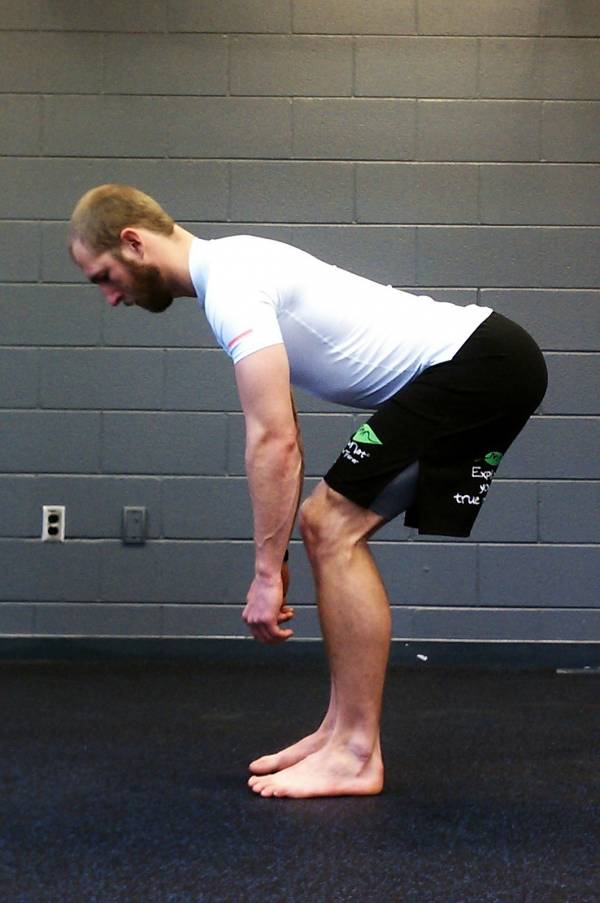
Left photo: Standing with good posture. Right photo: Keeping spinal alignment and vertical shins.
A commonly seen trend is quad dominant, imbalanced athletes with glute inhibition who run and lift with suboptimal technique.2 The pelvic girdle is balanced primarily between the hip flexors, abdominals, erector spinae (lower back muscles), and gluteal muscles. Many Americans spend an increasing amount of time sitting, leading to tight hip flexors, triggering reciprocal inhibition, and ultimately glute amnesia, robbing us of strength. Reciprocal inhibition in simple terms means, if one muscle is active the opposing muscle relaxes to get out of the way. A simple example of this is to extend your arm, contract your triceps as tight as possible and try to do a bicep curl without letting go of your triceps tension. This motion is physically impossible. The same issue arises with tight hip flexors that create inappropriate tension, not allowing full hip extension or glute activation.
Hip Hinge Screen
For these screens you will need a PVC pipe, broomstick, or any similar, lightweight rod to appropriately substitute safely.
Screen #1: Perform a hip hinge with a PVC pipe against your back to full flexion and extend back to standing. The PVC pipe must touch your tailbone (coccyx), hand in lower back, PVC touches upper back, hand behind neck, and PVC touches head throughout the entire movement. Any loss of contact will constitute failure of the test.
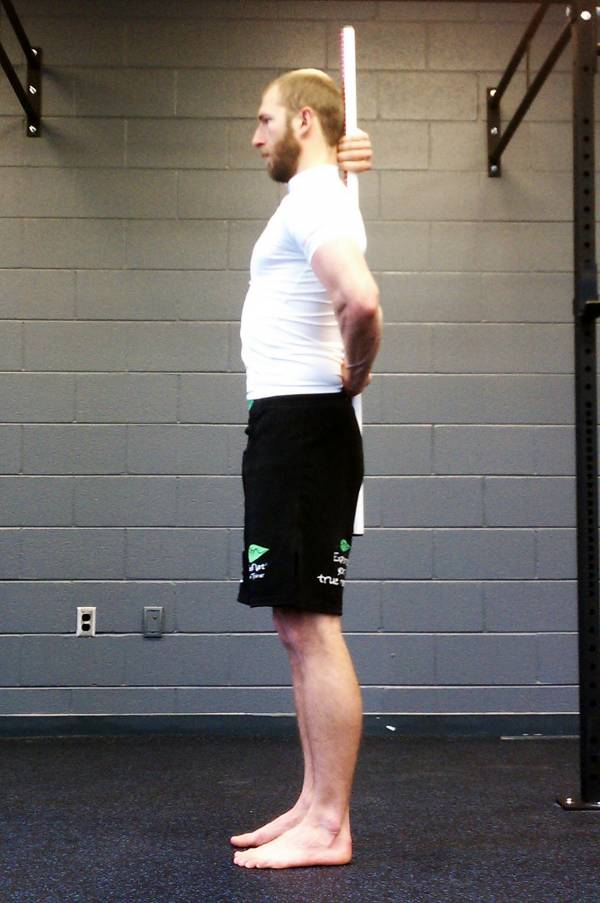
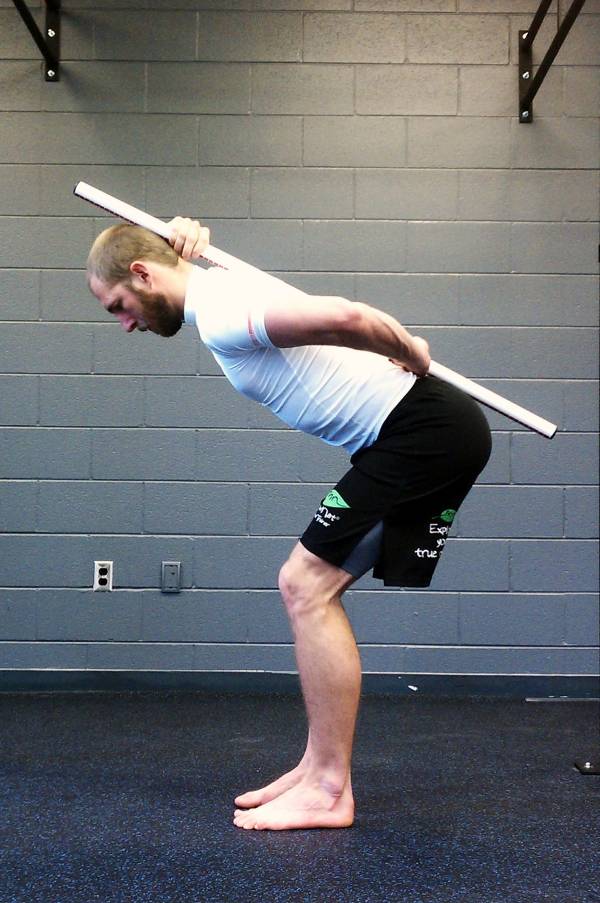
Screen #2: While standing, bend to touch your toes while keeping knees locked. If you are unable to maintain a locked knee position, continue work on the mobility exercises. Ensure proper posterior (backwards) weight shifting during a forward bend by using the hip hinge wall drill listed below under Re-Patterning of Movement.
Screen #3: Perform a single leg hip hinge. Place PVC pipe on your back, maintaining the same contact points as before, the tailbone, upper back, and head. From standing, perform a single leg hip hinge (shown below), ensuring hip symmetry and alignment with the foot. Use a mirror to watch for proper alignment. From the front view make sure no twisting occurs and the leg traveling backward is directly under your hip, while keeping your grounded foot in alignment. From the side view maintain alignment with level hips and the leg in line with the core. Use a mirror to check your form, or better yet partner up with a friend and screen each other.
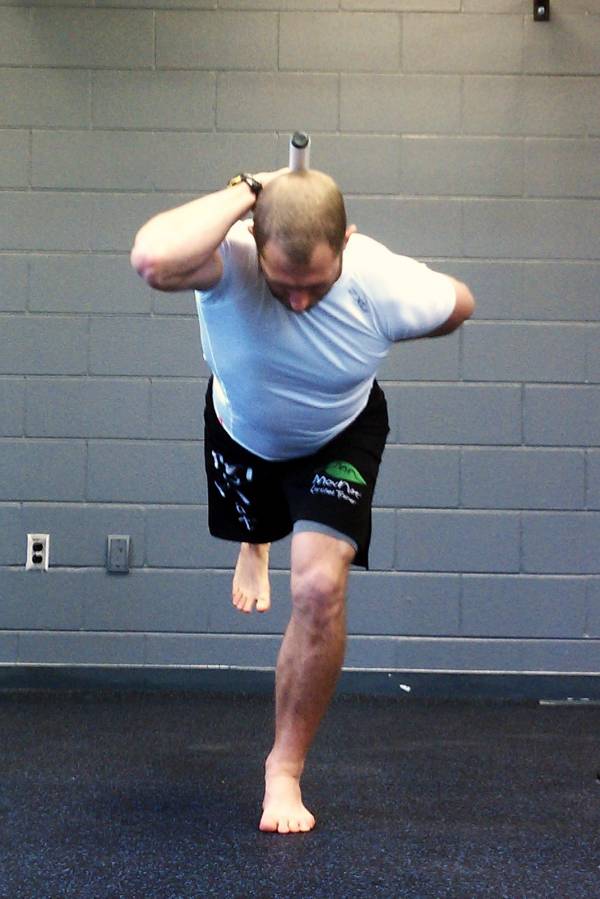
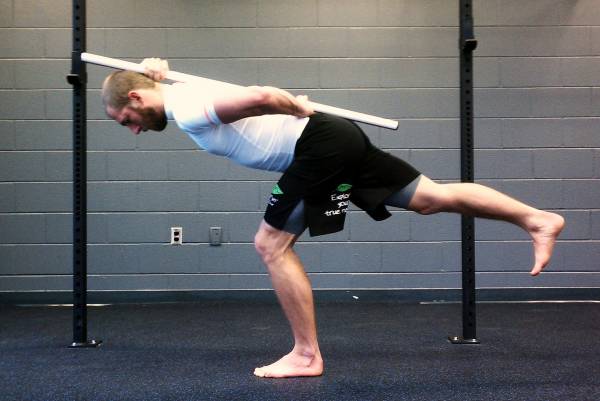
If the single leg deadlift pattern is failed, first go through this corrective pattern sequence with both legs until you are successful with re-patterning (screen #1). When successful, you may restart the sequence, shifting the exercises to single leg versions. Perform these excises on both legs and aim for symmetrical mobility, coordination, and strength.
Hip Hinge Corrective Pattern Sequence
- Mobility – Stretch and mobilize calves, hamstrings, hip flexors, and hip extensors. Use a foam roller (daily) to help increase your mobility gains3.
- Static Stability – Exercises putting your body in proper positioning and require you to maintain it:
- Hold a hip hinge at the bottom for 30 seconds for up to 3 sets
- Barbell rows in a deep hip hinge. Keep your back straight and pull towards lower stomach keeping a straight bar path. Start with approximately 20-25% of your bodyweight. (20lbs for a 100lb person or 40-45lbs for a 200lb person). Key point: Don’t sacrifice positioning for heavier weight
- Dynamic –Start with banded pull throughs, cable, and banded deadlifts using a controlled path. Practice kettlebell swings focusing on hip drive using the Russian style.
- Re-Patterning of Movement – Focus on proper form and full movement.
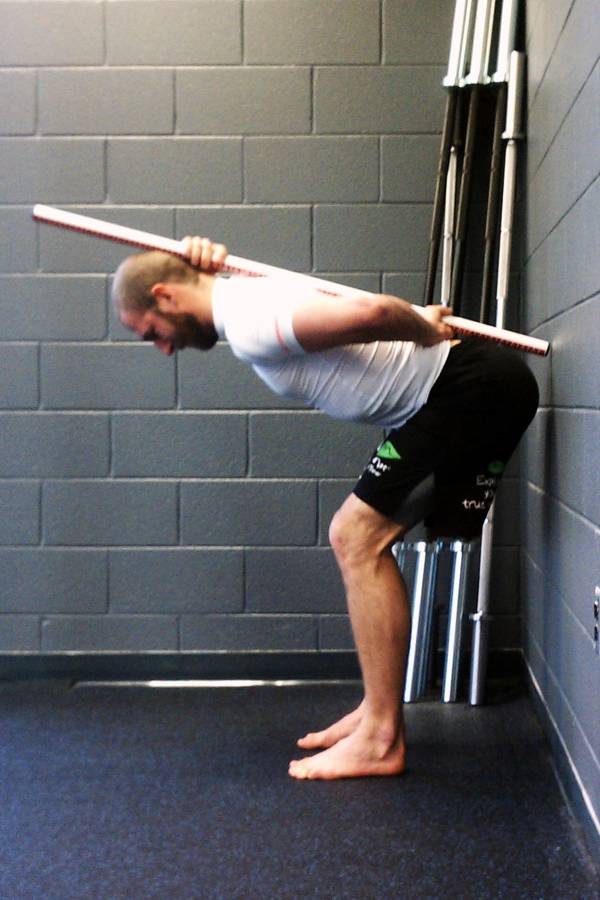 Deadlift using the wall drill (pictured) – to ensure posterior weight shifting. To perform the wall drill, begin by facing away from the wall with your heels 4 inches from the wall. Stand tall and begin movement with a hip hinge, reaching back for the wall with your butt. While maintaining a neutral spine and with bodyweight on the heels, stop when you reach the wall and return to the starting position, keeping your body under full control. If successful, move your feet another inch away from the wall. Repeat this drill until you reach your threshold distance. From here you should achieve a full hip hinge with proper form and remain 100% in control while not using the wall for support.
Deadlift using the wall drill (pictured) – to ensure posterior weight shifting. To perform the wall drill, begin by facing away from the wall with your heels 4 inches from the wall. Stand tall and begin movement with a hip hinge, reaching back for the wall with your butt. While maintaining a neutral spine and with bodyweight on the heels, stop when you reach the wall and return to the starting position, keeping your body under full control. If successful, move your feet another inch away from the wall. Repeat this drill until you reach your threshold distance. From here you should achieve a full hip hinge with proper form and remain 100% in control while not using the wall for support.- Alternating kettlebell deadlifts – begin standing with the kettlebell between your feet. Perform a hip hinge, when you reach the kettlebell recheck your form, engage your lats, pinch your shoulder blades together, and pull the weight. Set the kettlebell back down reversing proper form and return to the top without the kettlebell.
- Strength – Deadlift loads at 70-90% of 1rep max
- Power – Tempo deadlifts, power cleans, kettlebell swings, “Granny toss” medicine ball throw against wall or for height
- Performance – This is sport/training/goal specific. Everyone should achieve a base level of mobility, stabilization in the hip hinge movement pattern, strength, and power.
References:
1. https://web.archive.org/web/20150217185731/http://www.acatoday.org/pdf/back_pain.pdf
2. https://www.kinetic-revolution.com/glute-imbalance-inhibition-or-glute-weakness/






